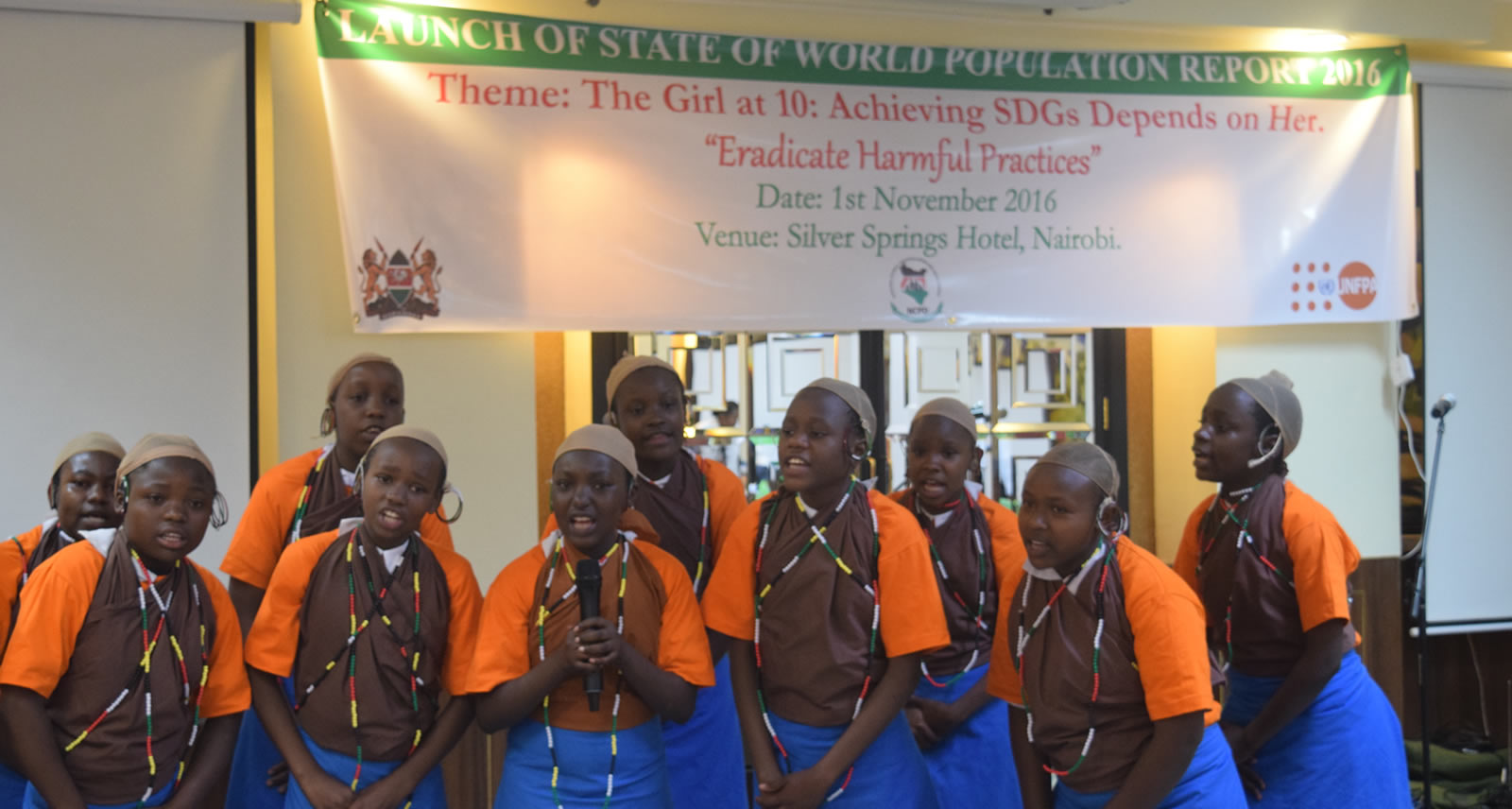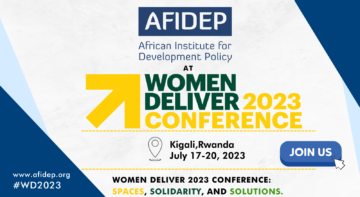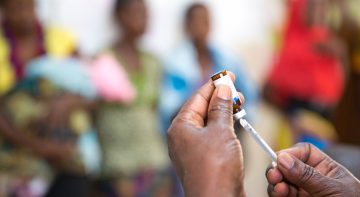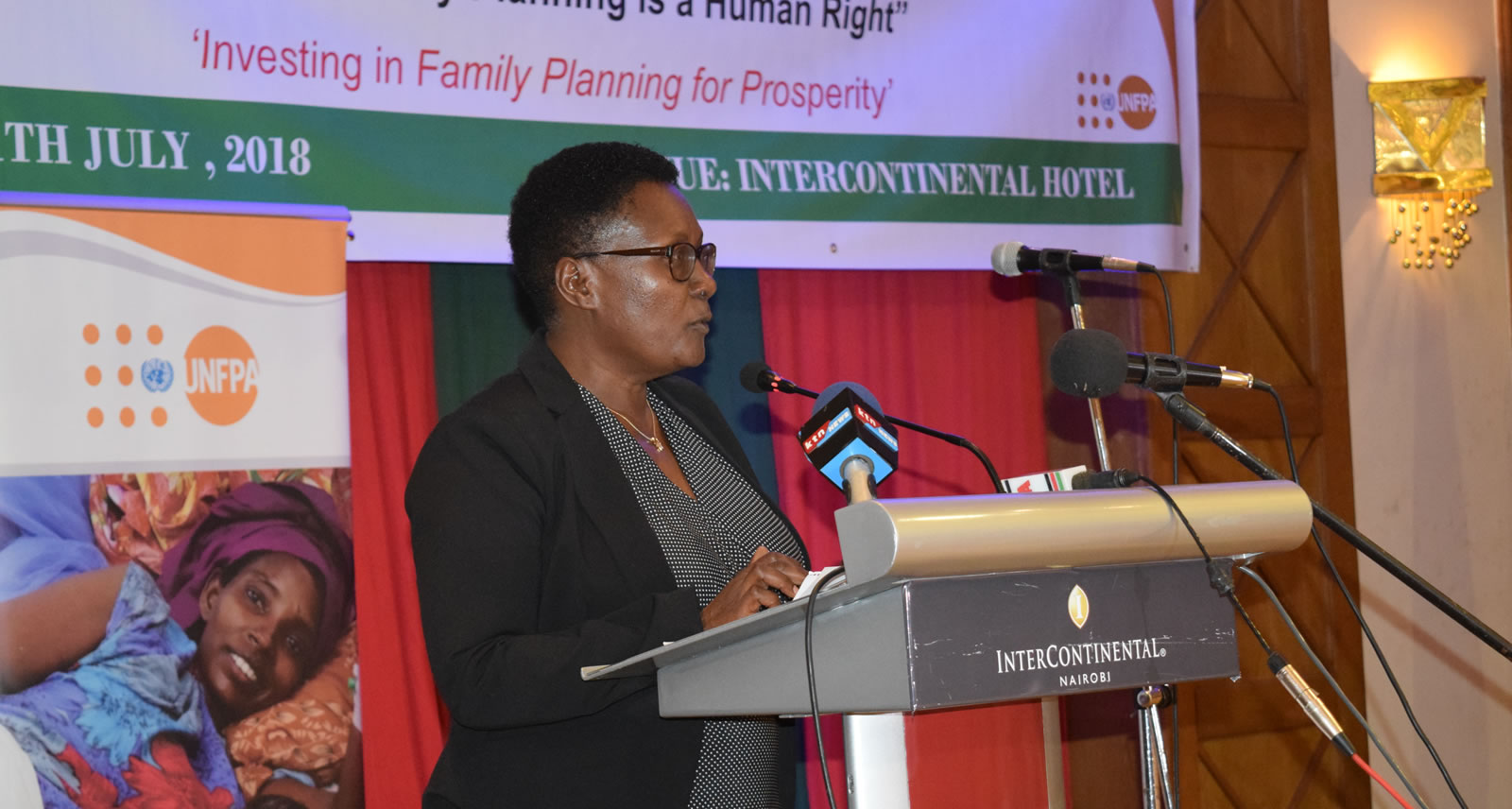News

On 1 November 2016, stakeholders in population and development convened at a forum to reflect on the health and wellbeing of the 10-year-old girl during the launch of the 2016 State of World Population Report. The launch, which was led by the National Council for Population and Development (NCPD) and the United Nations Population Fund (UNFPA) in collaboration with the African Institute for Development Policy (AFIDEP) and other stakeholders, came at a time when Kenya is refocusing strategies to propel the country towards attainment of Vision 2030 and the sustainable development goals (SDGs).
Officiating the launch was the Principal Secretary State Department of Planning and Statistics, Mr. Saitoti Torome. He noted that providing the girl child with education is critical in overcoming challenges facing adolescents and youth in Kenya and this will set her on a path to excel in life. Reading the official speech from the Cabinet Secretary, Devolution and Planning, Hon. Mwangi Kiunjuri, Mr. Torome noted that the government is making deliberate efforts to ensure women in vulnerable areas are not left behind. “Education empowers women and opens opportunities. An educated woman is also better placed to make decisions regarding her household and children’s upbringing”, the speech read in part.
Further, Mr. Torome emphasised that the government is placing extra value on the use of statistics for planning. “When we use statistics for planning, then we make better decisions,” he said. In addition, Mr. Torome said that such a strategy would ensure the government singles out the counties where challenges facing adolescents are rife and therefore craft county-specific programmes and interventions.
Dr. Josephine Kibaru-Mbae, the Director-General NCPD, reiterated the value of data in planning when she alluded to the need to disaggregate data on children and adolescents. She noted that data on 10 year-olds is not available as it is often lumped with data covering 5-15-year-olds.
The girl at 10 is vulnerable
According to Gift Malunga, the UNFPA Deputy Country Representative, 10 years is a delicate age for girls as this marks transition to adulthood. Further, girls at this age are in a period of self-discovery. It is therefore critical that the government and other stakeholders in development work collaboratively to ensure girls stay in school so they can escape the claws of early marriage, female genital mutilation (FGM), sexual exploitation and child labour. “When we keep girls in school, we increase their potential for higher income and increased productivity, and they can invest in the economic development of their country,” said Ms. Malunga.
Further discussions revealed that girls continue to experience complications due to teenage pregnancies, forced abortions, among others. For instance, the teenage pregnancy burden is highest in Narok County, standing at 40 percent. Following closely are Homa Bay, West Pokot and Nyamira counties at 33 percent, 28 percent and 27 percent respectively. The teenage pregnancy burden in these counties is higher than the national average, which stands at 18 percent.
Other factors contributing to the vulnerability of adolescent girls are poor nutrition and poverty.
Enactment of policies critical for reform
As it emerged from the discussions, Kenya is not short of policies meant to address the prevailing challenges facing adolescents. For instance, the 2015 Adolescent Sexual and Reproductive Health (ASRH) Policy is clear on the need to invest in girls’ education in order to overcome gender disparities. Further, the Policy is explicit on strategies to curb the teenage pregnancy menace that not only locks girls out of education and livelihood opportunities, but also poses life-threatening health challenges.
Other policies and laws supporting the wellbeing of girls include The Constitution of Kenya, The HIV/AIDS Education Sector Policy, The Sexual Offences Act, The Children’s Act, The National Reproductive Health Policy, among others. On this backdrop, therefore, what the government needs to invest in is strengthening frameworks for the implementation of the policy recommendations. Stakeholders in population and development, therefore, have a duty to work collaboratively with the government in order to bridge the existing policy-to-action gaps.
Scale up interventions that work
As revealed in a presentation made by Violet Murunga, Senior Knowledge Translation Officer, AFIDEP, there exist interventions that can be adopted for implementation in various counties across Kenya in order to curb challenges facing adolescents in general. For instance, cash transfers for poor families have been found to be an effective way of keeping girls in school. In addition, self-defense programmes and improvement of street lighting in slum areas have been found to be effective in reducing the incidence of sexual assault against girls. Of interest is the importance of stakeholders undertaking longitudinal studies that can evaluate the impact of these current interventions on the long-term wellbeing of girls in their adult life.
Other opportunities that exist for Kenya are: adopting the religious-based approach to dealing with the FGM vice; a critical look at the comprehensive sexuality education (CSE) curriculum in order to ensure gender issues are properly integrated; and strategies to deal with drug and substance abuse among adolescents. Ms. Murunga also called upon the government to ensure proper governance and accountability so funds set aside for programmes are well utilised. In addition, she noted that women need access to financial opportunities such as mortgages and education scholarships so that they can take good care of themselves better. This will have a trickle-down effect on the wellbeing of their children, particularly the girl child.

Mr. Saitoti Torome (left) officially launches the Report alongside Dr. Josephine Kibaru-Mbae. Photo: Diana Warira/AFIDEP
Related Posts





